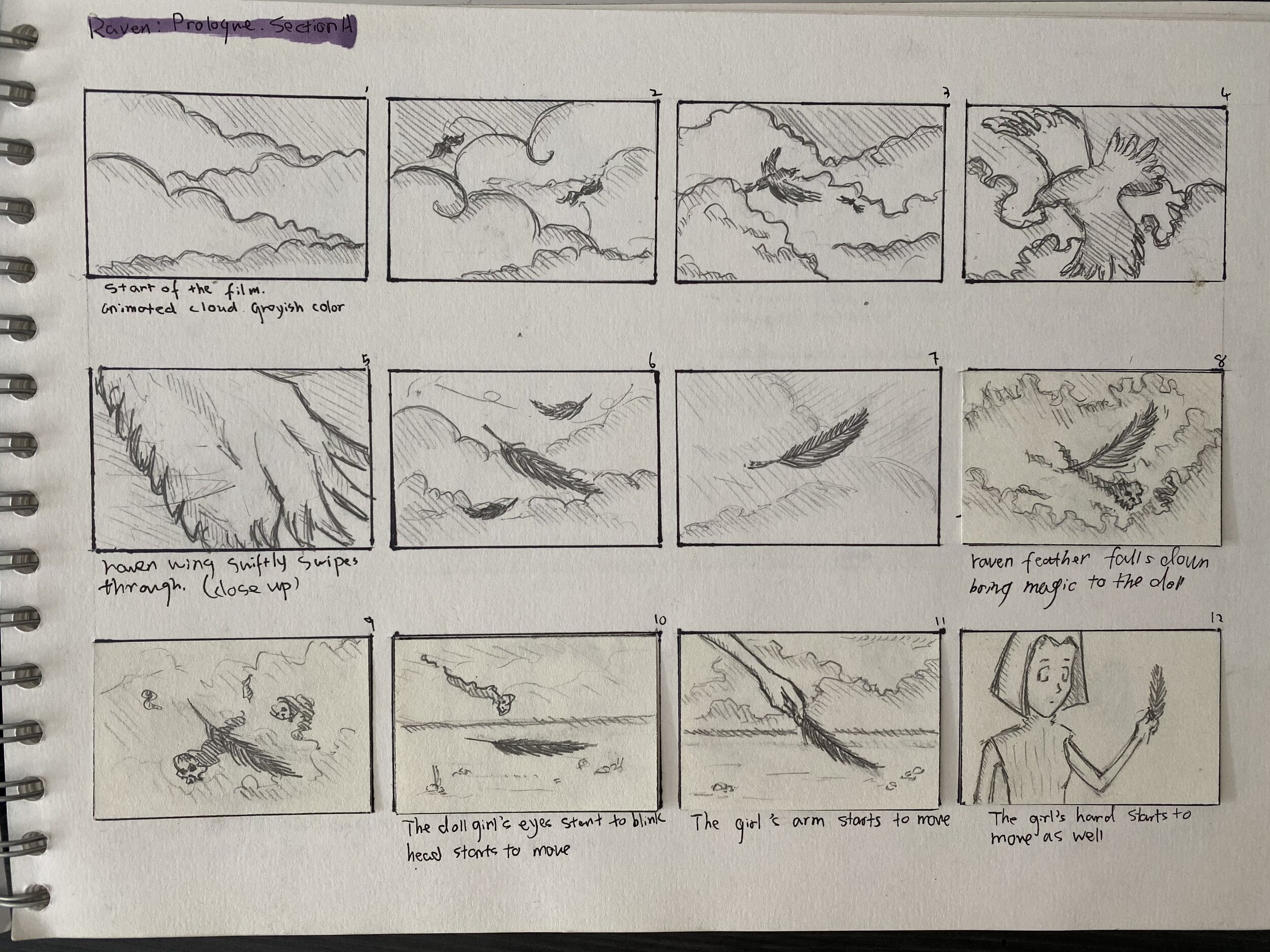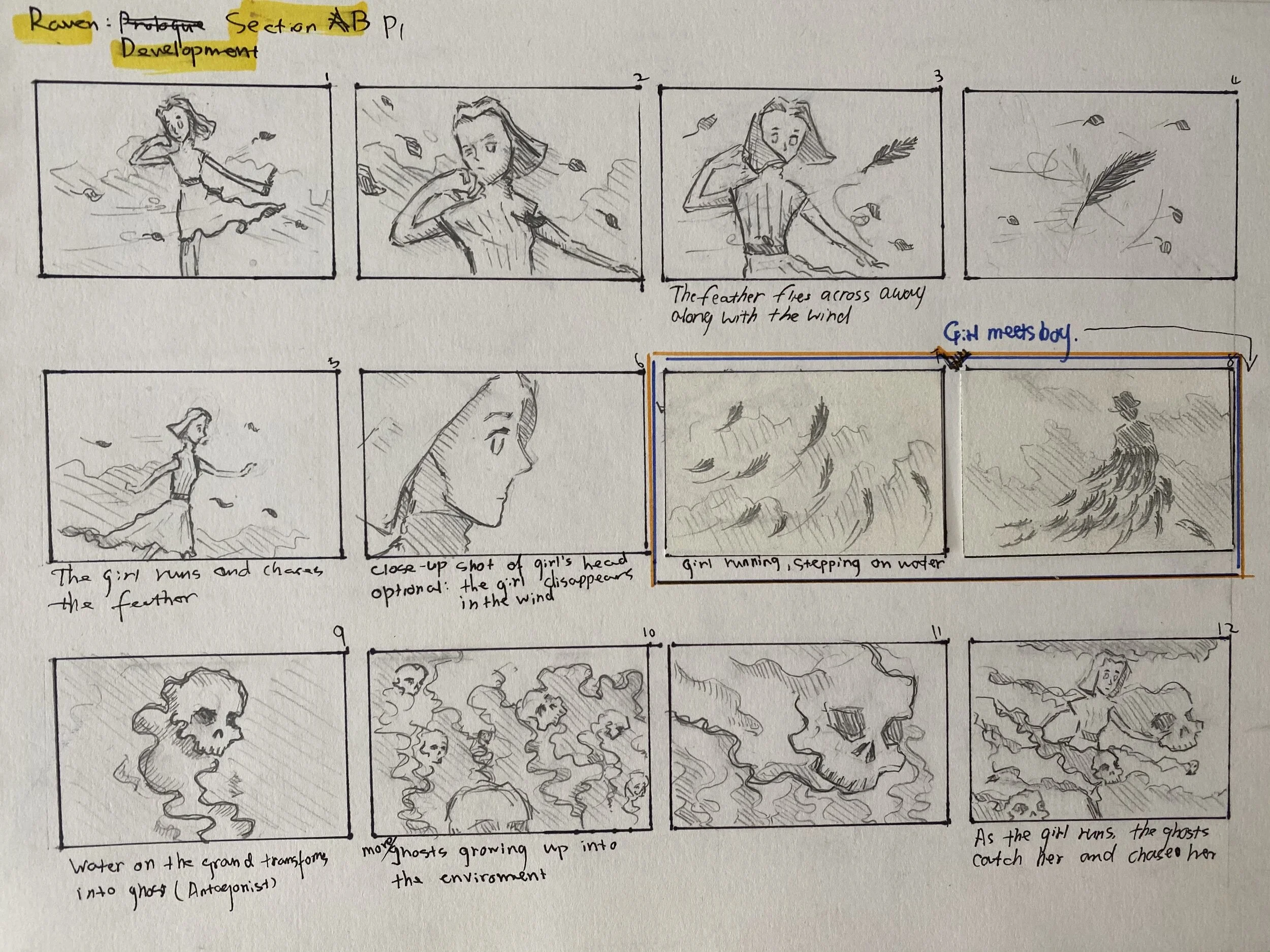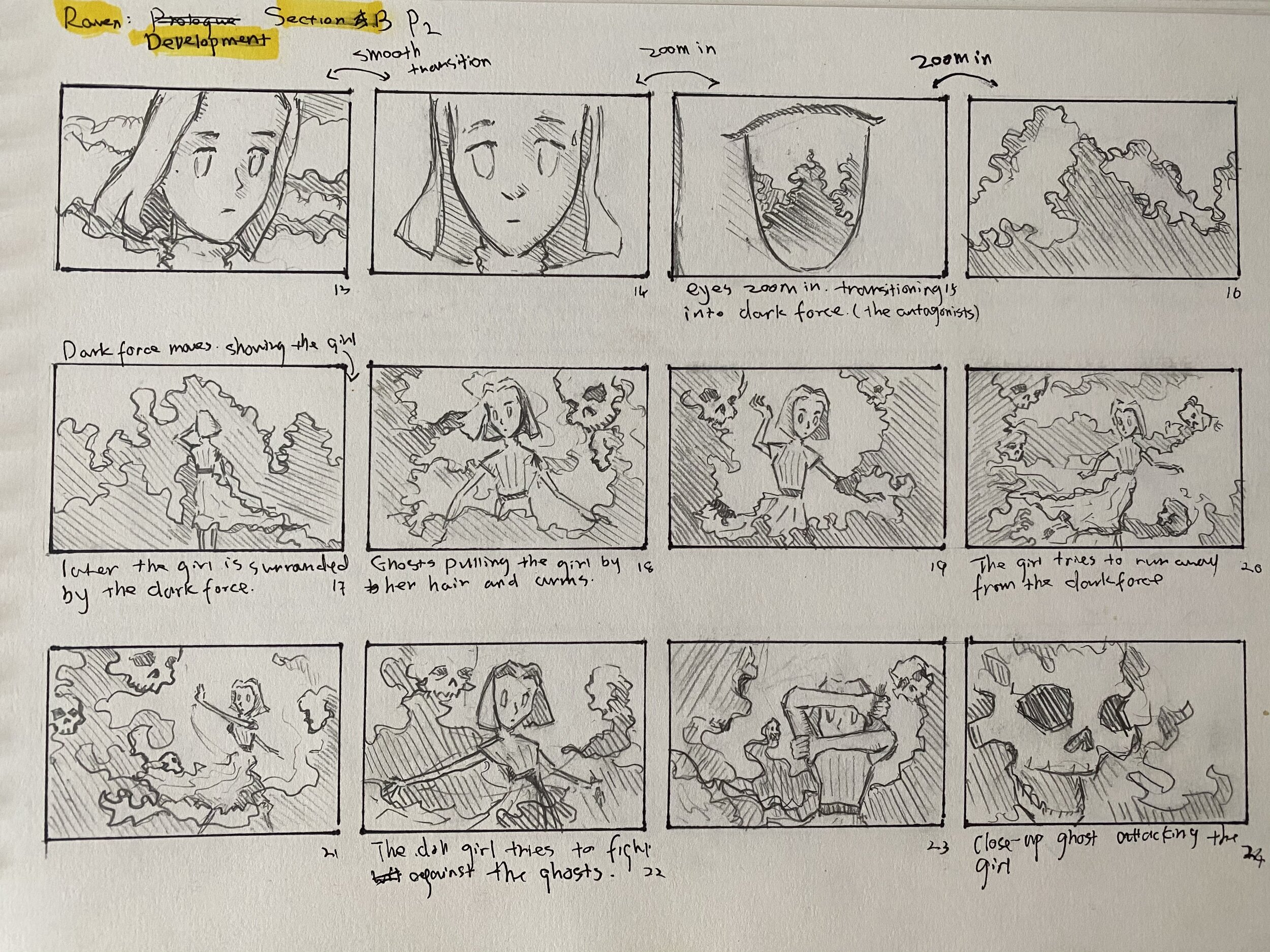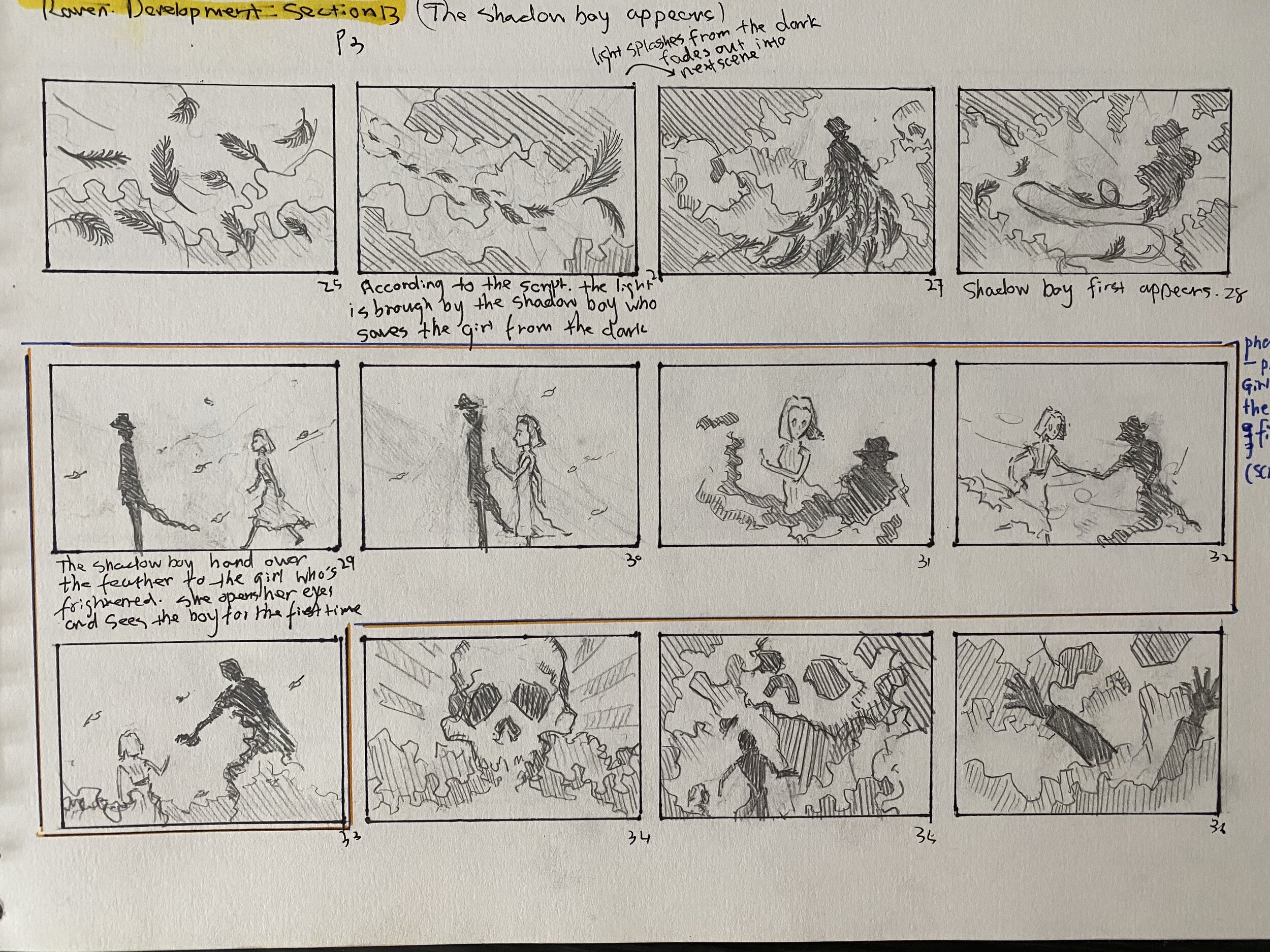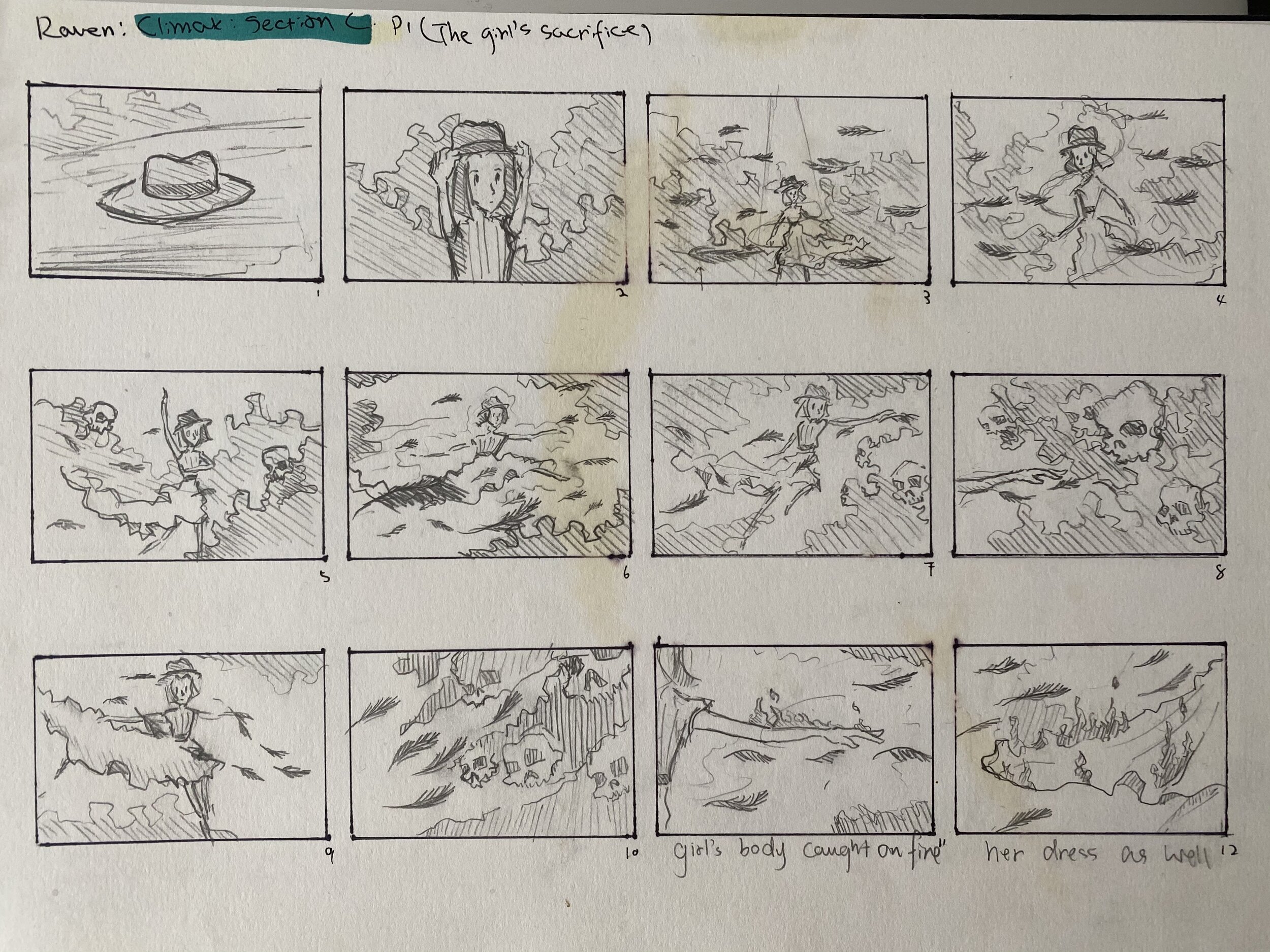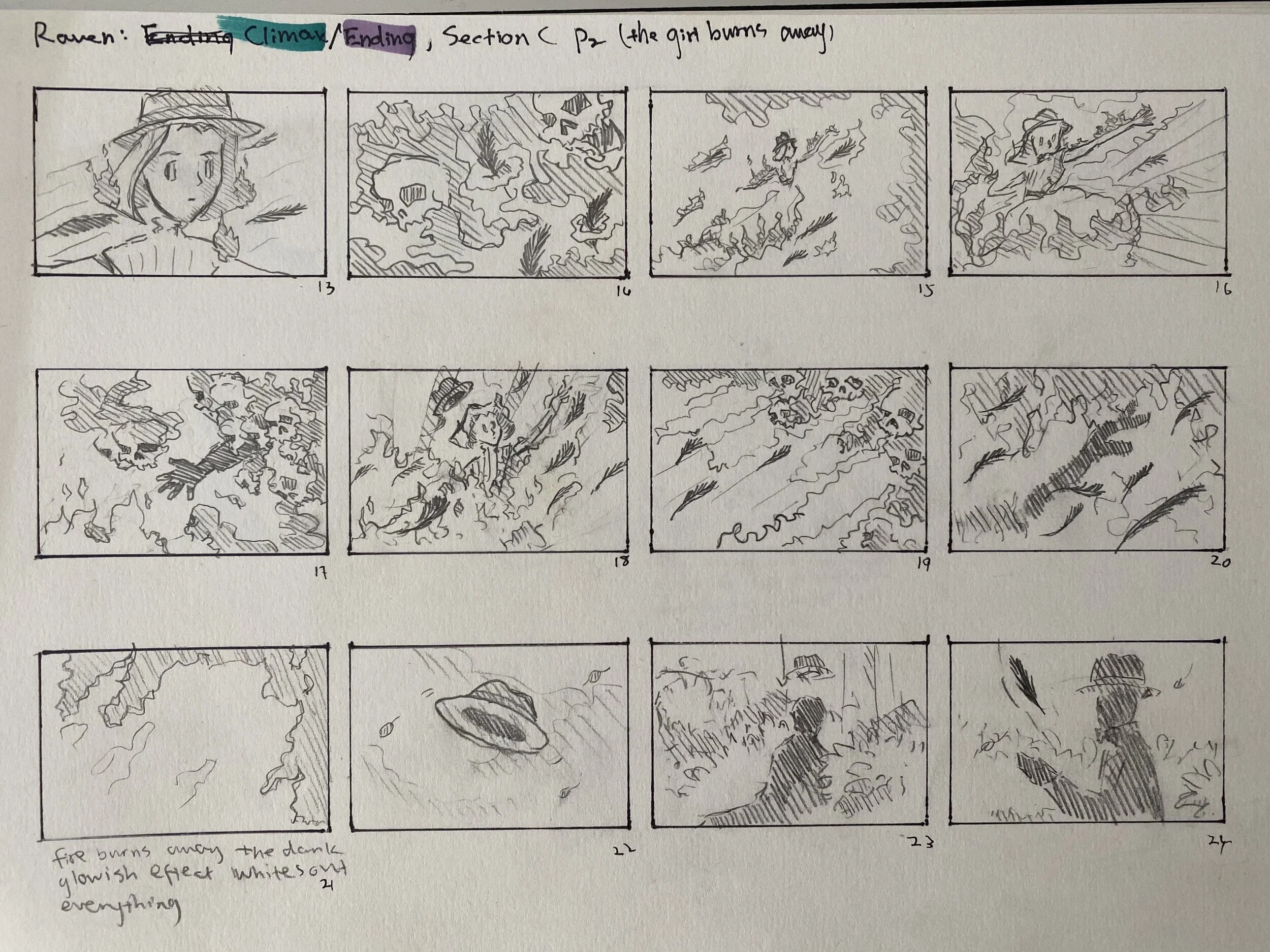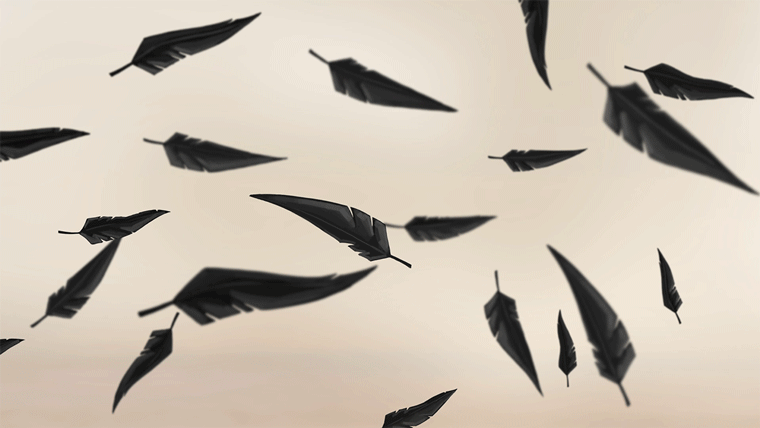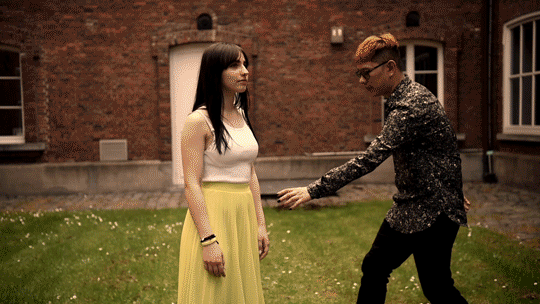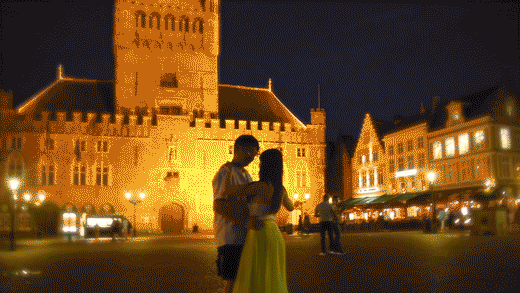RAVEN | ABOUT THE FILM
The film tells a story of an unanimated girl who sacrifices herself for saving a boy who has saved her life from the antagonists. The story is conveyed in four phases: birth, conflicts, death, and reincarnation, summarizing the circle of life of the two characters.
The making of the film involves animation, real-life filming, video producing and editing, and soundtrack development. The frequency of the film is 24fps hand-drawn on digital.
THE STORY
An unanimated girl coming alive with the feather magic and meets the shadow boy formed by raven feathers. The conflicting part of the story depicts the shadow boy sacrifices himself to prevent the girl from being attacked by the dark force, which awakens the inner power of the girl to fight against the force. Fighting with an ambition and efforts in order to save the boy, the girl sacrifices herself and disappears along with the dark force, transforming into a raven in the end. The shadow boy comes back to life, washing the shadow off from himself and becoming a real person. After realizing it is the girl who saves him, he eventually uses the raven feather magic to also turn himself into a raven to reunite with the girl who also a raven.
PROJECT TIMELINE
Screen Writing (script)
Character Design, Environment Research and Study
Visual Storyboard
Real-life Filming and Animatic
Animation Creation
Sound Design and Music Composing
Final Editing and Producing
RAVEN THEME EXPLORATION
This is an initial visual study on the theme of the animation film, shot in real life to explore the character’s characteristics briefly. In addition, to explore different camera angles, transitions, shifting as references for the animation.
STAGE 1: VISUAL STORYBOARD (SKETCHES)
The visual storyboard of the project is created based on the script of the film, and scenes development are divided into four different sections by plots. During the creation of the visual board, plannings including camera angles, perspective, movement, adjustments, cuts, are arranged, later followed by detail refinements on specific scenes with dynamic movements. The first-stage visual storyboard also determines the scene transitions and the anticipated time duration in each plot.
After the initial storyline development, a refined panel of sketches with more details are made for the key plots of the film as scene transition points associated with the detail plots that are later connected the entire story in a story thread ready for animating. During this stage, duration length of scenes are refined including necessary scene deletes.
The creation of the refined storyboard is divided into two parts: character-focused storyboard that primarily focuses on character movements/animation, during this stage, some sample character movement drawings are made; Environment-focused storyboard that focuses on the scene environment and secondary element by fore-ground, mid-ground, and background. During this process, animating style for the final production is planned.
STAGE 2: ANIMATIC/INITIAL ANIMATION CREATION
Based on the storyboard sketch from Stage 1, initial animations are in-production along with colour scheme exploration ready for animatic production. Animations are divided into character animations and supportive element animations. Tasks such as movement transitions, colour scheme, visual effects are planned during this stage. Besides visuals, time duration is also planned during the animatic process.
SAMPLE FILM ANIMATIC (RAW VERSION)
STAGE 3: REAL FOOTAGE SHOOTING/FOR REFERENCE/ROTOSCOPE CREATING
Raw footage clips are shot based on the initial sketches created in Stage 1 and are used as visual references for the animation. During this process, camera angle shifting, movements, transitions are defined for the final animating stage. The shooting focuses on filming character movements that later goes into the film environment in the animation. The length of the filmed clips is determined based on the scene duration planned in the original timeline in Stage 1. All the selected clips are also used as parts of the animatic.
SOUND PRODUCTION
Sound production is divided into two parts: Background music composing; Sound effects arrangement, working with three music composers and sound designers.
REFERENCE/RESEARCH
The initial musical theme starts with researching on soundtracks as references in existing films based on the motif of the animation with an aim to embrace the emotional linkage with the story of the animation. Soundtrack references by films including “The Danish Girl”, “In Bruges”, “Theory of Everything”.
BACKGROUND MUSIC COMPOSING
Music production works with the raw version (character-based) animation, especially the length of each musical track which is composed in alignment with scene lengths. The theme of the music varies based on the plots of the film. The final version of the music is edited along with the final animation, edits including length cut, effects, placement by scenes.
SOUND EFFECTS
Sound effects are added into the animation in the final production stage. Edits and sound adjustments are done based on the feedbacks provided from the raw version of the animation.
CREDITS:
EXECUTIVE PRODUCER: JIMMY MANSUO ZHANG
SCRIPT: JIMMY MANSUO ZHANG
SCRIPT EDITING: BEN RAWSON-JONES, ELLEN MEHER
FILMING: LIMQUN XIANG, MARTINA CARTA
ANIMATION: JIMMY MANSUO ZHANG
SOUND DESIGN: SAM LOYNES
MUSIC COMPOSING: ANTO FEDRIC, SAM LOYNES, JACK GREEN



